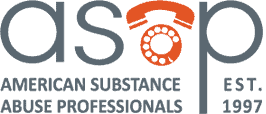Reasonable Suspicion Training: What Supervisors Need to Know
By Sandra Serrano
Effective supervisor drug and alcohol training has become increasingly vital in today’s workplace, where impaired individuals are more likely to cause accidents, injuries, and fatalities in safety-sensitive environments1. In fact, 70% of adults who struggle with alcohol or drug use disorders have jobs, translating to approximately 13.6 million workers in the United States2. Furthermore, 45% of employers report that impairment leads to more near misses, while 39% indicate it causes more workplace injuries1.
The financial impact of substance use in the workplace is equally concerning. The costs that employers pay for each employee with an untreated substance use disorder have risen 30% over the past three years3. Additionally, alcohol, as the third leading cause of death in the United States, comes with a staggering economic burden of $249 billion4. Consequently, understanding reasonable suspicion testing and implementing comprehensive training programs to recognize signs and symptoms have become essential components of workplace safety strategies.
Reasonable suspicion training equips supervisors with the knowledge and skills to identify potential substance use issues before they result in accidents or violations. This training ensures that managers can recognize the signs of impairment and behavioral red flags, document observations properly, follow appropriate procedures and policies when testing is warranted. Therefore, both DOT-regulated companies and (non-DOT) general workforce employers are increasingly prioritizing this training as part of their commitment to maintaining safe, productive workplaces while supporting employees who may need assistance.
Supervisors face rising challenges in substance-impacted workplaces
Workplace overdose deaths have escalated at an alarming rate, increasing by 536% since 2011, with overdoses now causing nearly one in eleven worker deaths on the job5. This dramatic rise presents unprecedented challenges for supervisors across all industries.
The substance use crisis permeates all demographics and occupations, though certain sectors face heightened risks. Construction and extraction occupations experience some of the highest drug overdose death rates, alongside fishing, hunting, and trapping industries62. Moreover, jobs involving difficult or dangerous work and safety-sensitive positions—such as transportation and manufacturing—show disproportionately higher rates of substance use disorders5.
Notably, an estimated 46 million Americans experienced a substance use disorder in 2022, with nearly two-thirds of these individuals (30.1 million) employed2. This translates to approximately one of every 22 deaths among persons aged 15-74 being attributable to unintentional overdose involving opioids6.
The workplace impact extends beyond safety concerns. Workers with substance use disorders miss nearly five weeks of work annually (24.6 days)—two weeks more than their peers1. Additionally, these employees are 40% more likely to change employers within a year, creating significant turnover costs5.
Several workplace factors contribute to increased substance use risk:
- High stress levels and work overload
- Physically demanding conditions
- Long or irregular work shifts
- Isolated work environments
- Limited supervision
Despite these challenges, supervisors often lack proper training to identify and address potential substance issues. According to data, 75% of employers have reported opioid use impacting their workplace, yet only 17% felt extremely well-prepared to address the issue7.
“There’s a critical difference between being proactive to prevent an overdose or accident in the workplace and reacting to a full-blown substance crisis under your roof. Training supervisors to recognize early warning signs and shifts in behavior is essential. Just as important is educating employees about the real risks of substance use—especially with the rise of powerful, emerging drugs. As many in the field often say, prevention starts with awareness, and awareness starts with training.” — Sandra Serrano, Chief Development Officer, American Substance Abuse Professionals (ASAP)
Training equips supervisors to act on reasonable suspicion
Proper training primarily serves as the cornerstone for supervisors to effectively recognize and respond to potential substance use in the workplace. Reasonable suspicion training provides supervisors with essential skills to identify signs of impairment and take appropriate action when necessary.
Comprehensive reasonable suspicion training prepares supervisors to spot the early warning signs of substance use before it leads to workplace incidents or policy violations. It empowers managers to identify signs of impairment, recognize concerning behavioral changes, document observations accurately, act with empathy and privacy along with following established protocols when drug or alcohol testing is necessary. The training also covers emerging drugs and evolving substance use trends.
Understanding state & federal specific training requirements
When it comes to reasonable suspicion training, one size does not fit all. Certain states require employers to provide supervisor and employee training as a matter of law, while others offer voluntary programs that incentivize compliance—often through workers’ compensation insurance discounts8.
Mandatory laws require employers in specific states to comply with clearly defined training content and procedures, with no exceptions. In contrast, voluntary laws give employers the option to comply in exchange for benefits such as insurance discounts. If an employer chooses not to participate in a voluntary program, they must still follow any applicable mandatory laws and their internal company policy. In addition, some states have laws that apply only to certain industries, such as mining, public works, or childcare8.
For example, Iowa mandates both supervisor and employee training. Supervisors must be trained to recognize signs of substance abuse, properly document observations, and refer employees to available support resources10. Employees must be educated on the dangers of substance use in the workplace and informed about employee assistance programs or other certified community resources8.
Arkansas has a voluntary law requiring two hours of supervisor training—one hour focused on alcohol use and one hour on drug use—for employers seeking certain state-provided benefits. Illinois enforces a mandatory training requirement for public works employees, although the law does not specify the length or content of the training beyond covering reasonable suspicion8.
Montana’s mandatory testing law allows, but does not require, reasonable suspicion testing. However, if an employer chooses to conduct such testing, they must comply with the federal DOT training standards outlined in 49 CFR Part 40, which include very specific training requirements for supervisors8.
Many other states incorporate reasonable suspicion training into broader supervisor education requirements under either mandatory or voluntary statutes. Even in states where no specific laws exist, proactive training programs are increasingly being adopted by employers to protect their workplaces. These preventive measures serve as critical safeguards—not only helping reduce risk and liability—but also supporting the safety and well-being of employees and the surrounding community8.
Under federal Department of Transportation (DOT) regulations, supervisors of safety-sensitive employees—such as commercial motor vehicle drivers regulated by agencies like FMCSA9, FRA, FTA, FAA, PHMSA, and USCG—are required to complete a minimum of 120 minutes of reasonable suspicion training. This includes 60 minutes focused on recognizing the signs and symptoms of alcohol misuse and 60 minutes on controlled substance use. Additionally, the Federal Railroad Administration (FRA) mandates an extra hour of post-accident training to help supervisors assess incidents involving potential substance use. This required training ensures that supervisors are equipped to identify circumstances that may reasonably indicate a driver, pilot or other safety-sensitive employee is under the influence, ultimately helping to prevent serious safety risks on the job.
The value of training goes far beyond simply meeting regulatory requirements. Supervisors who are properly trained can recognize signs of possible impairment with greater confidence, allowing them to step in early and reduce the risk of accidents or safety incidents. Just as important, the training helps them approach these situations professionally and with discretion, ensuring that employee privacy is respected throughout the process.
Since 1997, American Substance Abuse Professionals, Inc. (ASAP) has helped more than 300,000 employees return to work safely after positive drug or alcohol tests—whether prompted by reasonable suspicion, post‑accident screenings, or their own decision to seek assistance in a recovery‑friendly workplace. In addition to these return‑to‑duty services, ASAP offers robust reasonable‑suspicion training for supervisors and comprehensive drug‑and‑alcohol awareness programs for employees across both DOT‑regulated and general workforce settings.
Conclusion
Workplace substance abuse presents complex challenges that demand comprehensive solutions from employers and supervisors alike. Therefore, reasonable suspicion training stands as a critical component of any effective workplace safety strategy. Without proper training, supervisors lack the tools to identify potential substance use issues before they escalate into accidents, injuries, or fatalities.
Fortunately, organizations that implement comprehensive training programs reap significant benefits. First, trained supervisors can confidently identify signs of impairment and document observations properly. Second, they learn to conduct empathetic employee interviews while maintaining professionalism. Third, they develop skills to navigate the complex workplace landscape in turn reducing cost and safe guarding those around them.
Essentially, reasonable suspicion training represents more than regulatory compliance; it embodies an organization’s commitment to employee wellbeing and public safety. When employers prioritize both education and support, they create environments where safety, productivity, and recovery thrive together.
Through our ASAP Learn Online platform, we provide a full catalog of engaging, fully-narrated, and interactive training courses designed to enhance the user experience. Developed by industry experts, all trainings meet the requirements for DOT compliance and general workforce education.
Our DOT supervisor courses cover all applicable modes—including FMCSA, FAA, FTA, PHMSA, and USCG—with an optional third hour to fulfill FRA post-accident training requirements.
ASAP offers flexible delivery options, including self-paced online learning and live webinars meeting your regulatory guidelines and company’s workplace policy and goals.
Contact us today at 888-792-2727 ext. 607 or email info@go2asap.com to learn more.
Thank you for joining us for Part 1 of this series. In our next installment, we’ll explore how to build recovery-friendly workplace environments and address the impact of emerging drugs.
References
[3] - https://go2asap.com/articles/reasonable-suspicion-training-a-state-by-state-overview/
[4] - https://go2asap.com/blog/recognizing-alcohol-use-in-the-workplace/
[5] - https://www.nsc.org/workplace/safety-topics/drugs-at-work/implications-of-drug-use-for-employers?srsltid=AfmBOooj33qzFSvTPOgPToJHHc9Y5f2zMGz8vG_71KhfInehDQGPBINU
[6] - https://www.cdc.gov/niosh/substance-use/about/index.html
[7] - https://roots-recovery.com/how-substance-abuse-affects-job-performance-in-the-workplace/
[8] – https://go2asap.com/articles/reasonable-suspicion-training-a-state-by-state-overview/
[9] - https://www.fmcsa.dot.gov/us-department-transportation-dot-drug-alcohol-supervisor-training-guidance
[10] – https://go2asap.com/service/non-dotstate-required/


